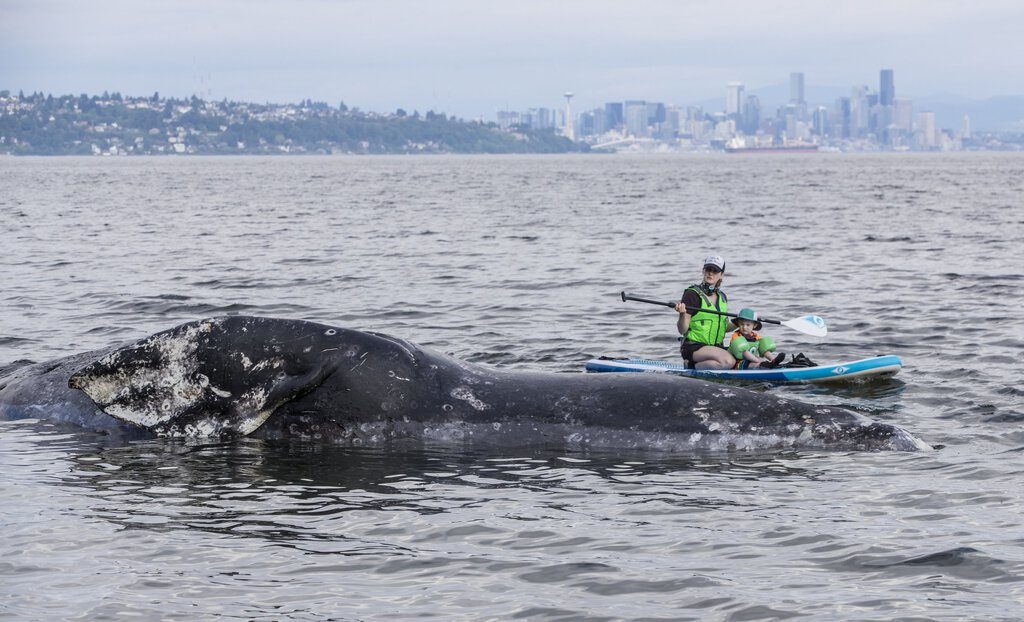
The whale is a 42-foot long adult female, and had been dead for a while, said Michael Milstein, spokesman for the National Oceanic and Atmospheric Administration (NOAA) Fisheries West Coast region.
It was not immediately clear how this whale died, he said. A team from the nonprofit Cascadia Research Collective visited the carcass to take photos and samples of its skin and blubber Tuesday, he said. Examination of the whale found no external signs of ship strike or entanglement.
The blubber was fibrous and dry, which suggests the whale was not getting enough to eat. A more thorough examination of the whale will take place later this week, when the whale is relocated.
Researchers are trying to understand why so many gray whales have been found dead and stranded on beaches since the spring of 2019. More than 200 gray whales were stranded last year in an Unusual Mortality Event — about double the usual rate for a migration year — including 34 that stranded in Washington state waters alone, said John Calambokidis, senior researcher at the Cascadia Research Collective in Olympia.
"Something has changed with their food supply in the Arctic in some way, but it's not clear what that change is. That's what we're trying to figure out," Milstein said.
The whale will be towed to south Puget Sound, by the Washington Department of Fish and Wildlife. How long it will be before that happens depends on the tides, and how long it takes to secure the whale, Milstein said. But the tow will take about 12 hours.
A large percentage of the whales that have stranded this year are thin. High numbers of strandings began last spring in the northbound migration of the grays to their Arctic feeding grounds. The mighty grays undertake one of the largest migrations of any animal between their feeding grounds in the Arctic and their calving grounds in Mexico.
There are not as many stranded whales this year as last, but the numbers are still elevated, with 27 strandings coastwide, including six in Washington waters.
At this time last year approximately 55 gray whales had stranded coastwide, and by the end of the migration, 215 whales stranded from Mexico to Canada during the entire migration season.
The whales don't feed on their southbound migration or on the calving grounds, so if they didn't get enough to eat in the Arctic before they leave to head south, some will not make the whole journey back north. "What is precipitating that is the big question," Milstein said of the die-off.
A sub group of gray whales called Sounders stays in Washington waters through summer, feeding off the shore of Whidbey Island and elsewhere, where they burrow their heads in the mud, feasting on shrimp. It's a risky feeding strategy, so close to shore. But scientists are studying whether it may be an adaptation some of the gray whales have hit on to manage lean times.
A similar die-off occurred in 1999-2000. But the whales still are at healthy numbers. One theory of why some aren't getting enough to eat is that their population since a ban on hunting was enacted in 1972 has grown so large at more than 25,000 whales, that they have reached the environment's carrying capacity.
Staff writer Lynda Mapes contributed to this story.



Reader Comments
Would have been impossible from downwind, without a separate air source.
RC
Reminded again of 'bloated rhino underfoot.' [Link]
Perspective is everything.
RC